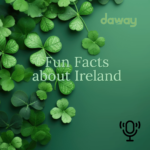Every year on March 17th, people around the world don shades of green, don shamrock motifs, and raise their glasses in celebration of St. Patrick's Day. It's a day synonymous with festivities, parades, and a hearty embrace of Irish culture. But how did this global phenomenon come to be, and what are its roots?
The origins of St. Patrick's Day trace back to the early 17th century, commemorating the death of St. Patrick, the patron saint of Ireland. St. Patrick, originally hailing from Britain, is credited with bringing Christianity to Ireland. Legend has it that he used the three-leafed shamrock to explain the concept of the Holy Trinity, hence its enduring association with the day.
However, the modern incarnation of St. Patrick's Day as a vibrant celebration owes much to the Irish diaspora. During the 19th century, particularly in the United States, Irish immigrants sought solace in their shared heritage amidst the challenges of assimilation. St. Patrick's Day became a unifying force, a day to proudly assert their Irish identity in a new land.
Today, St. Patrick's Day transcends its religious origins to become a global celebration of Irish culture and heritage. From Dublin to Dubai, London to Buenos Aires, cities worldwide adorn themselves in green, paying homage to the Emerald Isle. Parades featuring elaborate floats, traditional music, and lively dancing fill the streets, while pubs overflow with revelers enjoying pints of Guinness and hearty Irish fare.
But St. Patrick's Day isn't just about revelry; it's also a testament to the enduring spirit of community and inclusivity. In recent years, the celebration has evolved to embrace people of all backgrounds, uniting communities in a shared appreciation for Irish culture.
In Ireland itself, St. Patrick's Day remains a public holiday marked by religious observances, cultural events, and, of course, the iconic St. Patrick's Day parade in Dublin, which draws visitors from far and wide.
As we raise a toast to St. Patrick's Day, let us remember its rich tapestry of history and tradition. It's a day to celebrate the resilience of the Irish spirit, to embrace the bonds of community, and to revel in the beauty of diversity. So whether you're Irish by birth or Irish at heart, let the spirit of St. Patrick's Day unite us all in joyous celebration. Sláinte!
If you found this post fascinating, don’t forget to check out Aurelia’s podcast on St. Patrick’s Day too!
Download the PDF worksheet of this post here!



